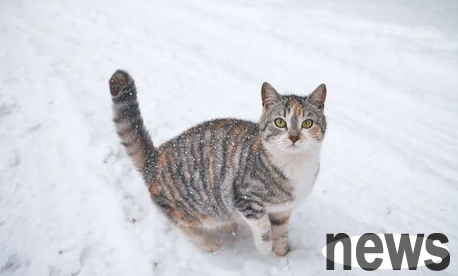Cats are cute and easy to keep, so they don’t need to be taken out for a walk. They are the choice of many pet owners. When choosing to feed kittens, the kittens have weak resistance, so pay special attention to the infectious disease of cat distemper.
Female distemper is an infectious disease caused by feline panleoleocytopenia virus (FPV), also known as cat infectious enteritis. Very contagious and urgent. Kittens under 1 year old are more likely to get and are more serious than adult cats. The mortality rate is extremely high.

Female plague is characterized by a sharp decrease in leukocytes (but not all leukopenia are cat plague, and other diseases can also cause leukopenia, such as feline leukemia, cat hepatitis, etc.). Cats with incomplete vaccination or unvaccinated are prone to cat distemper, especially those with 3-5 months of age. If a female cat is infected during pregnancy, it will cause stillbirth, miscarriage and neurological symptoms of newborn kittens.
How does cat plague spread?
The secretions and excretions of sick cats contain a large amount of viruses. Healthy cats may be infected by contact with the virus-carried cats and may be infected by oral infection, and may also be infected by contact with the sick cats. Blood-sucking insects such as lice and fleas can also help spread the disease. Pregnant female cats can pass on the disease to the fetus. Recovery cats can still expel viruses through excretion and secretions for a long time, causing other cats to be infected.
Therefore, avoid cat plague and need isolation treatment.
Clinical symptoms
When cats are infected with cats with feline plague virus, there are generally two situations. For cats with strong physical resistance, although they are already infected by the virus, they do not develop the disease, which means they will not have clinical symptoms of cat plague, but are just healthy and poisonous cats. And those cats with weak physical resistance are very unfortunate, and they will have a degree of "Recommended: What are the pets? For more pet breeding skills, please pay attention to: 567 Pet Network, WWw.567peT.cOM "] Different cat plague symptoms. In mild cases, it may just be that their appetite has become worse, while cats with severe conditions will have more typical cat plague symptoms.
The main manifestations are: fever, which can reach 40~41℃; depression and anorexia, and even injures. The most typical symptom is frequent vomiting, no vomiting about eating, and the vomit is yellow bile-like. Even if the cat has not eaten or drunk for several days, they can still vomit or pull it out; diarrhea, the degree of diarrhea in each cat is not exactly the same, and in severe cases, watery and bloody stools appear. And it can be pulled many times a day, while cats with mild symptoms may only have defecation and looseness; as the condition worsens, diarrhea and bloody stools will occur, and even excrete out of the intestinal mucosa (slim stools or flakes, stripes). Due to constant vomiting and diarrhea, the sick cat will quickly develop symptoms of dehydration (poor skin elasticity, sunken eyeballs). Other complications include oral ulcers, bloody dysenteritis, jaundice, and generalized intravascular coagulation syndrome. If not treated in time, they will die soon due to collapse; some kittens may have neurological symptoms, and the cat will be unable to walk normally, and may stagger when walking, and often fall down unconsciously; while some kittens are infected with cat paralysis virus before they are born, and when they are born, they may have retinal dysplasia, overlapping or wrinkled lesions. These cats are usually blind or have very weak vision.

The course of the disease exceeds 5-7 days and no fatal complications occur, so it can often recover; the number of leukocytes will return to normal within 24-48 hours after the course of the disease.
The most acute type, cats may die suddenly without showing clinical symptoms. Acute type dies within 24 hours. The body temperature of the sick cat can reach above 40℃ when it is feverish, which may then drop to normal body temperature and then rise again, and the high fever may not subside. When the condition is critical, the body temperature of the sick cat may be significantly lower than the normal body temperature. Some cats have mild symptoms and are even asymptomatic, but may develop or worsen if they are suddenly changed in the environment, decrease in immunity, and after surgery. Infection in pregnant female cats can cause miscarriage, stillbirth, and fetal malformation.
Of course, the cat shoveler should not abandon the cat if it is caused by cat plague. Although cat plague is terrible, some can be cured. If you choose it, don’t abandon it.
